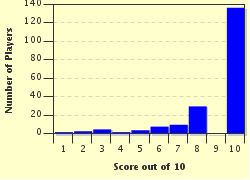
So Where Do You Come From in Africa? Quiz
The African continent is a melting pot of different ethnic groups and cultures. See if you can match the ethnic group to the country with which they are most associated.
A matching quiz
by KayceeKool.
Estimated time: 4 mins.
- Home
- »
- Quizzes
- »
- World Trivia
- »
- Cultures
- »
- African Cultures
